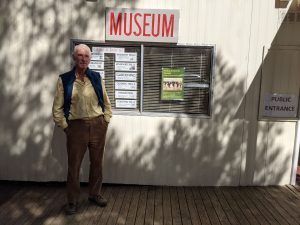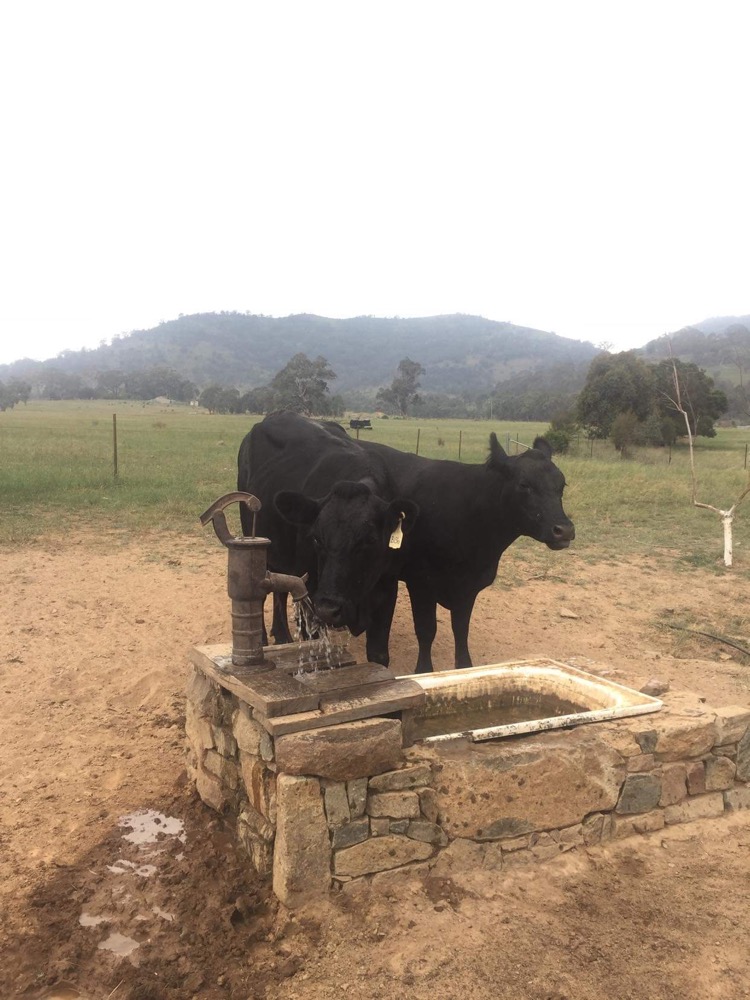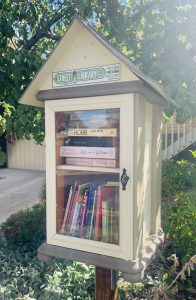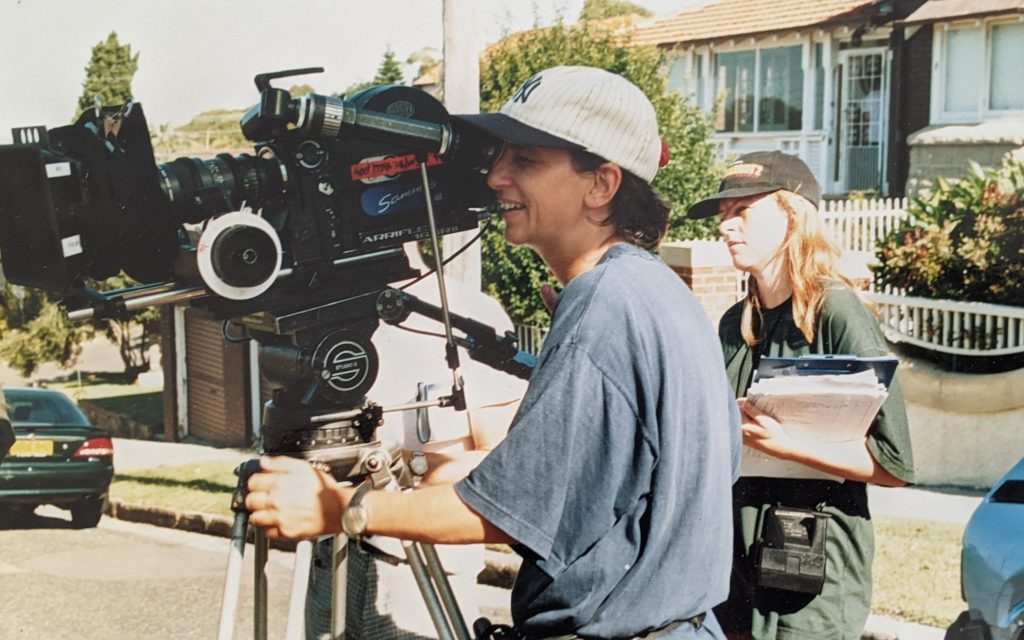Emissions scheme or a mere pipe dream?
ANNABEL Duff, primary school student and daughter of a farmer, reaches her small arm out the window of her Dad’s twin-cab ute to pluck a head of grain from atop a swaying wheat stalk.
The grain, no bigger than an adult’s fingernail, is the product of seven long months of growth in a dry and dusty paddock 40 kilometres from the small town of Forbes, in the NSW Central West.
“Dad, is it the wheat that you chew on and it turns into chewing gum?” Annabel asks into the front seat, where I am sitting with Matthew Duff, who has a practised look of patience on his boyish face.
“Yeah, nah, it’s the wheat,” he says.
The forty-something cropping farmer is undertaking the daily routine of checking his canola and wheat crops for any sign that they are ready for harvesting.
Annabel tries to split the husk with her small teeth, but the grain is still green and will not budge.
Duff, pictured, watches his daughter in the rear-view mirror with a smile as he says, “Oh, I think you’ll have to do a fair bit of chewing there.”
Annabel continues her struggle with the grain as our conversation returns to the purpose of the interview: mallee trees.
Two rows of the hardy eucalypt are standing to attention along the fenceline of Duff’s 2000 hectare (nearly 5000 acre) farm, shiny blue leaves rustling on their thin grey-brown branches.
Spread over 23 hectares of cropping country, there are 23,000 mallee trees planted here, most not even two metres tall. They fringe the green paddocks in two straight lines like schoolchildren; whispering, wriggling, waiting.
But what are thousands of dainty natives doing in the heart of the state’s wheat belt, taking up valuable farming country at a time when struggling farmers need to utilise every inch of land they can get?
For science, of course. For science, technology, electricity, energy and, ultimately, the future.
These humble trees are part of a $1.3m trial to test their viability as an alternative energy source, funded by one of Australia’s largest electricity providers, Delta Electricity.
The trees grow for some five years before, at a height of about eight metres, they are lopped off near their base and mulched into pellets.
These will be taken to the Wallerawang Power Station, at the (western) foot of the Blue Mountains. Here the pellets will be ‘fired’ in specially modified coal-boilers to generate electricity.
Participating landowners are expected to be reimbursed the equivalent of what they would usually make from a cash crop over the same land area. This will be paid when the trees are harvested every three years.
Given that 2010 was the first drought-free year that NSW has had since 2001, the possibility of a risk-free investment is appealing.
“It’s a way of taking the risk out of cash cropping every year,” Duff says. “It’s potentially a passive income stream, like having dividends in a share.”
Whether this “share” turns out to be profitable is a minor concern for Duff, because his only outlay was providing the land.
”It hasn’t cost us a cent.”
The harvesting is to be done by a unique ‘mallee harvester’, which was developed by Western Australian farming technology company Future Farm Industries Cooperative Research Centre Ltd with the help of a $1.5m Western Australian government grant.
Delta Electricity is wholly owned by the NSW Government, so the expenditure of state money on bringing in such specialised equipment is a sign of how much is at stake over the success of a few hundred thousand trees.
The catalyst for this reliance on eucalypts was the passing of the Federal Government’s Renewable Energy Target (RET) scheme in August 2009.
It was the policy decision that sent power companies nationwide clambering for a quick alternative to coal.
With a deadline of 2020, by which time 20% of Australia’s energy had to come from renewable sources, a long-term yet cost-effective alternative was a necessary. But it’s not as if there will be results overnight.
The mallee trees are being used as ‘biomass’, which is a recently popularised term that incorporates any living, or recently living, substance that is being converted into energy.
A man with a love for discussing biomass is Brian Stanmore, Adjunct Professor at the University of Western Australia’s Centre for Energy who after more than 30 years in the combustion industry is still publishing papers on the topic.
From his home in Bendigo, Victoria, the retired professor laments that politicians are expecting Australia to become coal-free too quickly. One minister in particular, he says, wants everything to be renewable in ten years, but doesn’t “read the literature” that proves this is impossible.
Professor Stanmore cites the recent hype with wind farms and solar power as an example.
“You have to keep fossil fuel stations hot and running, ready for when the wind drops,” he says. “So they’re running and consuming fossil fuels, but they’re not generating.
“They’re on standby mode… so the savings on greenhouse gas emissions get less and less and less.”
But biomass, too, has its downsides. Trees do not absorb and store as much solar power as man-made solar cells do, so very large quantities are required before they produce anything worth converting into electricity.
“I did the sums for supplying Melbourne with liquid fuel [from biomass] at current consumption rates and you need 60 000 square kilometres, which is a quarter of the area of Victoria!” Professor Stanmore laughs at the very idea.
The expense and complexity of renewable sources is what stopped companies from taking advanced action until they were forced to by the Gillard government’s Clean Energy laws.
One MegaWatt hour of electricity from biomass, such as from those humble mallee trees, costs up to double as much to produce as energy from black or brown coal does.
This figure was revealed by the Prime Ministerial Task Group on Emissions Trading in 2007, but is justified by the science that essentially says we have no choice. The atmosphere cannot sustain our current way of life.
And the resources that literally fuel this existence are depleting too. The World Coal Association estimates that, at current production levels, the world’s coal reserves will only last another 118 years.
This seems, and is, generations away. However, renowned environmentalist Professor Tim Flannery rebuked the argument that climate change is no immediate threat to us, in his 2008 bestseller The Weather Makers.
“I’m far from certain that this is true,” Professor Flannery wrote. “And I’m not even sure it is relevant. If serious change or the effects of serious change are decades away, that is just a long tomorrow.”
Yet tomorrow, for some, cannot come soon enough. Nearly eighteen months into the mallee trial, all that Delta Electricity can do until harvest time is monitor the trees’ growth and hope it is the solution they need it to be.
“[The trees] will reduce our coal consumption and CO2 emissions by one million tonnes a year,” the former chief executive of Delta Electricity, Jim Henness, told [10 March 2010] the ABC at the start of the trial (Henness retired in July 2010).
This optimistic goal would be a stark turn-around for a company that, in 2009-2010, used approximately 8600 giga-joules (GJ) of coal for every one GJ of biomass in supplying 12% of the electricity needs of Australians.
Considering how much is being pinned on the growth of these carefully-selected eucalypts, there is one wheat-chewing farmer who will be characteristically sunny no matter the outcome.
“One day we might get some money from them,” Duff says uncertainly. Then he adds with a smile, “If not, I’ve got 23,000 trees on my place.”






Be the first to comment!